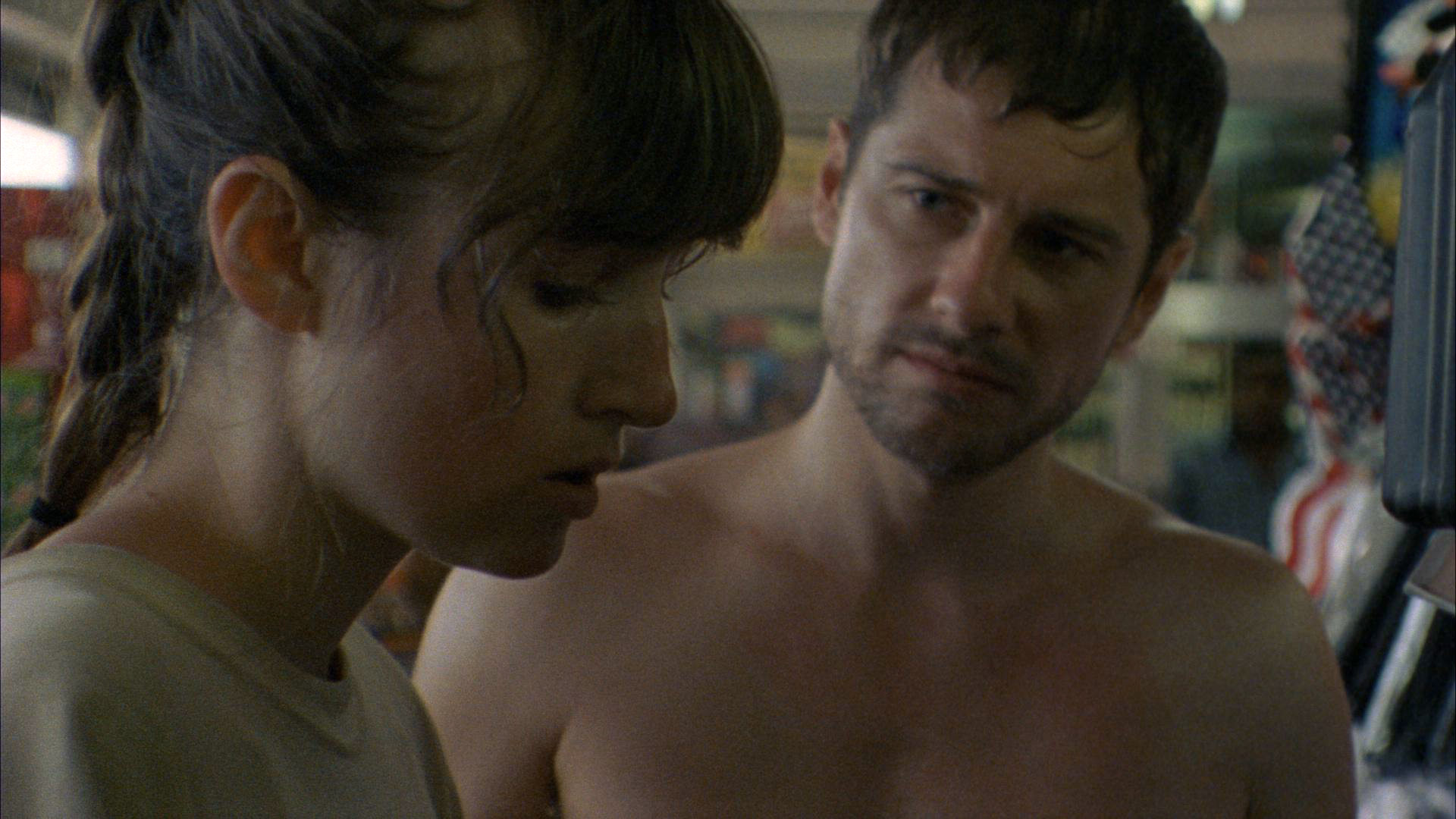Describing hot weather, Jane Austen once wrote, “It keeps one in a continual state of inelegance.” Amy Seimetz’s directorial feature debut film Sun Don’t Shine is a moody lovers-on-the-run tale that taps into that state: characters smeared with grease and mud, dripping sweat, a pink sheen on their desperate faces, all presented with such raw viscerality on 16mm stock that one cannot help but feel the claustrophobic Floridian heat on their own flesh.
Shooting in her home state of Florida was an important decision for Seimetz; as she describes in the interview, the state’s summer heat informs the way people dress, think and move. In Sun Don’t Shine, the emotionally needy Crystal (Kate Lyn Sheil) and her comparatively cool-headed boyfriend Leo (Kentucker Audley) drive across state in a sedan with a bad secret in the trunk
Inelegance is [spoiler alert] the least of Crystal’s problems—the couple are trying to cover up the murder of Crystal’s husband, whom she killed in a fit of rage—and while their plan seems straightforward, Crystal’s childlike regressive tendencies, accompanied by emotional outbreaks and an inability to think coherently, make their trip nigh impossible. The film is less interesting in regard to the closure of its narrative than the emotional resonance that surfaces between these two characters, which show the psychological and cognitive breakdown of two people under that much pressure.
Keyframe: You’ve been making movies since you were eighteen, and you’ve been part of the filmmaking process in that period of time in different roles, as a director, producer, actor or something else. For your first feature, what were the most salient things that you learned in these various experiences that you were able to bring to Sun Don’t Shine? Or was it a case of starting up from the ground up?
Amy Seimetz: It was kind of both. With each film that you make, you have to approach it as its own beast, because every film needs ‘tender loving care’ in its own special way. If you’re going to make the film on a DIY or independent level you have to know the inner workings of production, the writing, the actors, the set design, where it’s going to take place, so that all the logistics seamlessly come together. With Sun Don’t Shine I wrote it in pieces over a series of months. I would go to locations [in Florida] and take pictures and video and attach the actors and D.P. and the producer to every single email. I wrote the script over a series of months through these emails, in prose. As I was writing it I was having a conversation with all the departments on how to make it seamless. By the time I had a finished script—I only really put it in a finished script format for production purpose—it was already built and we had worked out all the logistics, so when we were shooting, everyone knew what we were shooting and had the overall scope of everything.
Keyframe: The way you establish Florida in the film is an accomplishment, particularly for setting the tone of the film. When I watched it, I was sitting in an air-conditioned room and I felt like I was drenched in sweat like the characters. It had such an impact on me physically. Can you talk about your decision to shoot in Florida, and how high noon and 16mm aided that decision?
Seimetz: It’s funny, my sister who watched the film for the first time and who also grew up in Florida, she said, ‘I was so happy when [Crystal] got in the swimming pool at the end!’ It’s brutal in the summer. When you get down there it’s so hot and sticky that you just kind of give up in the summer months what you look like because once you step outside it’s like stepping into a sauna. I think it informs how people dress and move in Florida. Unless you’re sitting on a beach enjoying the beach, it’s just brutal to get through your day outside. It affects your thinking because you’re not comfortable and your body’s saying, ‘can I just get to a place where I can function correctly?’ So your brain is not working. That was the interesting pressure element I wanted in the story. The humidity affecting their decision-making, as well as the crime that they had committed, and the pressure of everything affecting their logic and their decisions. When you read about Florida crime stories sometimes, you know there are websites that comment on how crazy people are down there. But just try going there in the middle of summer and try to think straight! The heat makes people crazy.
Keyframe: Oh yes. The link between violence and intense heat has been proven scientifically.
Seimetz: It makes you feel stuck. I wanted the viewer to feel it with high noon. But everyone tries to avoid filmmaking in high noon.
Keyframe: I didn’t know about that. Why avoid high noon?
Seimetz: It’s hard for cinematographers to get what they want because the shadows come straight down, so the lighting setups they need to combat high noon takes so much time that you schedule everything around it. I wanted to use it to our advantage. I wanted it to feel gross and I wanted those shadows, there’s something really haunting about them. My cinematographer Jay Keitel and I were talking about how, on digital, it would look too stark and gritty and wouldn’t have the movement of film. With film, each frame has this grain that’s constantly moving, and these particles resemble what humidity looks like surrounding you. We also shot on film because we wanted to replicate 1970s cinema.
Keyframe: In terms of your influences for this film, I can definitely see how you appropriated elements from 1970s American cinema, like Two-Lane Blacktop, A Woman Under the Influence, Deliverance, Wanda. I can especially see it in the character of Crystal, and the unbelievable situation she finds herself in. You’ve mentioned in other interviews how complicated female characters, who contain that certain craziness, they just don’t exist on-screen anymore. Do you have any theories as to why this type of character disappeared?
Seimetz: I guess money would be the answer to that. It’s interesting because I just did a talk with [film critic/programmer] Miriam Bale about Fatal Attraction when she screened it [for the La Di Da Festival]. I have such a complicated relationship with that movie because I think Glenn Close is such an interesting character. She’s in control of her career and she’s successful, she falls for this guy and then becomes pregnant. It’s an interesting storyline and how it explores women’s issues. But at the end they just turn her into this monster! They had an original ending where she wasn’t quite a monster, where she was more a victim of circumstance, though I’m not sure if I agree with that ending either. But at least it acknowledges that the Michael Douglas character was culpable. When you’re watching these films, you feel uncomfortable. I think audiences feel uncomfortable with women playing complicated characters. So therefore it doesn’t sell, maybe. Unless you can tie it up for everyone, and allow it to be a matter of ‘Oh, she’s just crazy.’ I’m not sure why we stopped pushing for these female characters in general—even on the independent level. I mean I guess it doesn’t sell or something.
Keyframe: Have you seen Enlightened?
Seimetz: Yes! I love Enlightened.
Keyframe: The DVD cover is a close-up of Laura Dern, right after she’s fired, with that crazed look on her face and the eye-makeup streaks. When I worked at a video store this summer, it was so difficult selling customers on the idea of giving the show a chance. I really think people were turned off by the expression on her face.
Seimetz: Laura Dern has done a really good job at bringing awesome, crazy, complicated women to screen. There’s Wild at Heart, which was also an inspiration for Sun Don’t Shine. And also Citizen Ruth, where she’s having an abortion and people take dueling sides to control what she’s doing with her body. So she’s gotten to a place where she can bring these characters to life.
Keyframe: You may be right about money; Enlightened was cancelled after two seasons.
Seimetz: And it was so good. And funny and dark. Her character is so frustrating but has these beautiful ideas about what life should be like. In terms of a writing process, you need to be conscious of why you’re writing a character, you ask yourself, ‘How do i infuse this woman with something that’s not just ‘quirky’?’ How do you make her a more complicated person? I may even be prone to this too, thinking: what can people identify with? Or, what’s the easiest way to get to the next plot point? It’s something you have to be hyper conscious of when you’re writing. And for the most part people are writing to sell and entertain, so the focus isn’t to get interesting characters on screen.

